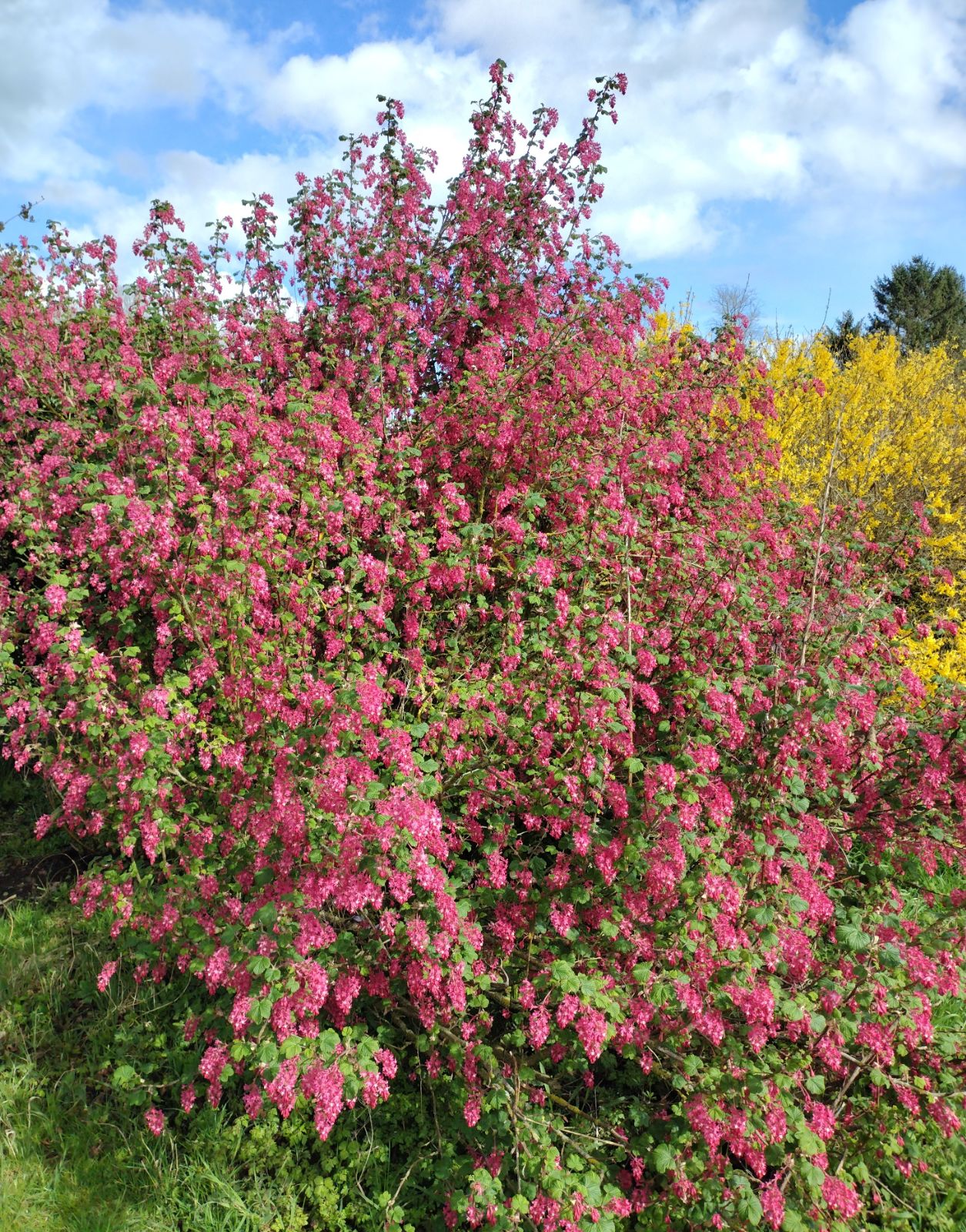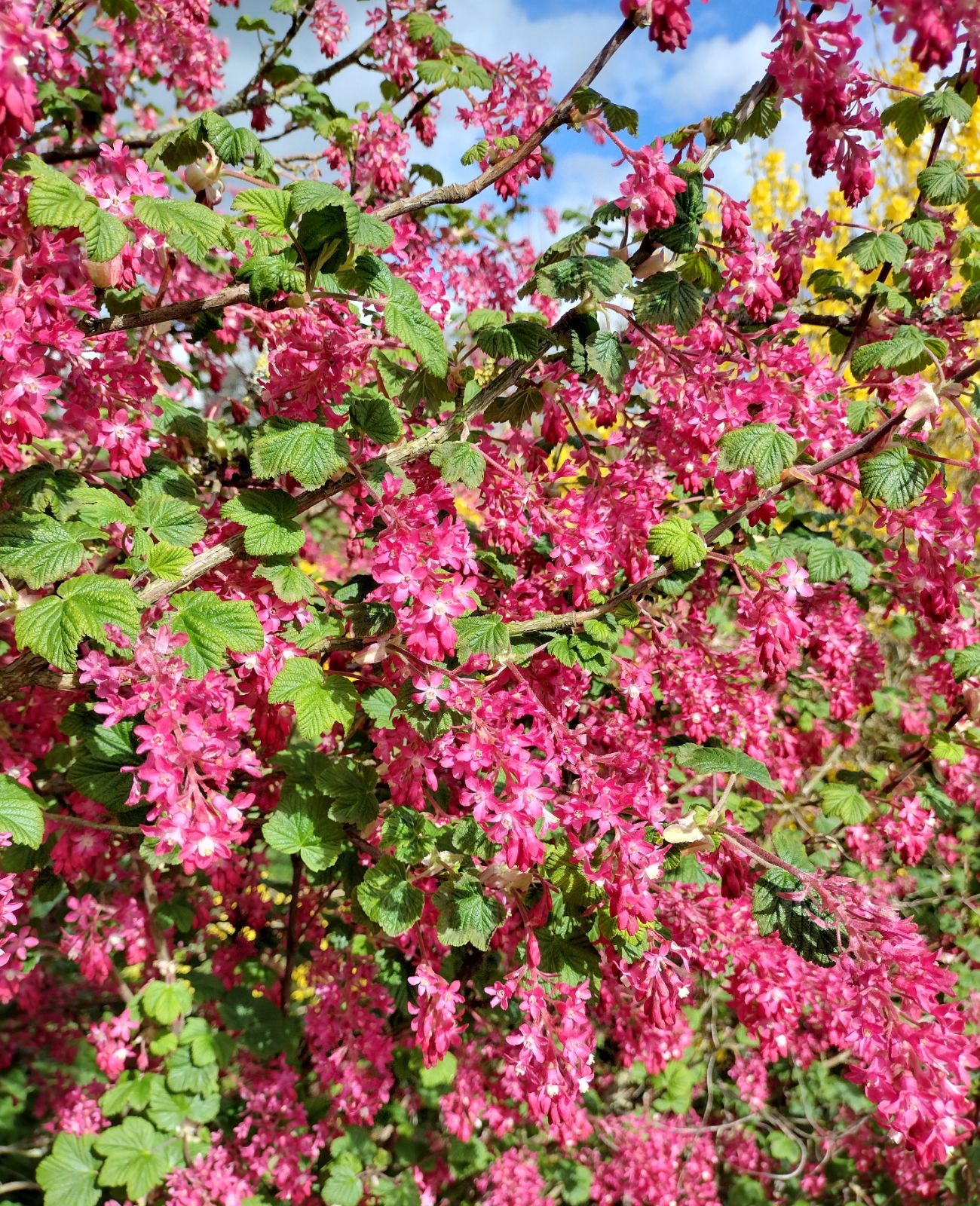Ribes sanguineum
Credits
Article from Bean's Trees and Shrubs Hardy in the British Isles
Recommended citation
'Ribes sanguineum' from the website Trees and Shrubs Online (treesandshrubsonline.
Genus
Common Names
- Flowering Currant
Infraspecifics
Other taxa in genus
- Ribes alpinum
- Ribes ambiguum
- Ribes americanum
- Ribes × beatonii
- Ribes bracteosum
- Ribes cereum
- Ribes ciliatum
- Ribes curvatum
- Ribes diacanthum
- Ribes fasciculatum
- Ribes gayanum
- Ribes glandulosum
- Ribes henryi
- Ribes lacustre
- Ribes laurifolium
- Ribes leptanthum
- Ribes lobbii
- Ribes longeracemosum
- Ribes maximowiczii
- Ribes menziesii
- Ribes mogollonicum
- Ribes nigrum
- Ribes niveum
- Ribes odoratum
- Ribes orientale
- Ribes pinetorum
- Ribes roezlii
- Ribes rubrum
- Ribes speciosum
- Ribes tenue
- Ribes uva-crispa
- Ribes valdivianum
- Ribes viburnifolium
A deciduous, glandular, unarmed bush 7 or 8 ft high, usually considerably more in diameter; young shoots covered with a close, fine down. Leaves three- or five-lobed, palmately veined, the lobes broad and rounded, unequally toothed, the base conspicuously heart-shaped, 2 to 4 in. wide, less in length, glabrous or nearly so above, soft with pale down beneath; stalk 3⁄4 to 2 in. long, covered with minute down like the young shoots, but with a few bristles near the base. Flowers deep rosy red, produced during April in drooping, finally ascending, racemes 2 to 4 in. long, 1 to 11⁄2 in. wide, each flower 1⁄2 in. long and nearly as wide; the slender flower-stalk, ovary, and tubular receptacle dotted with glandular down. Fruits globose, 1⁄4 in. in diameter, glandular, black covered with blue bloom. Bot. Mag., t. 3335.
Native of western N. America; discovered by Menzies in 1793, and introduced by Douglas for the Horticultural Society in 1826. This currant is the finest of ribes and in the very front rank of all spring-flowering shrubs, being one of those that never fail to blossom well.
'Albescens'
Flowers white with only a slight tinge of colour; leaves hairy beneath. Not so vigorous as the red-flowered sorts (R. sanguineum var. albidum Nichols., not Kirchn.).'Albidum'
Flowers white, tinged with pink, in dense pendulous racemes. Leaves glabrous beneath. This is referable to the var. glutinosum (R. albidum Paxt.; R. sanguineum var. albidum (Paxt.) Kirchn.). It was raised around 1840 in Scotland.'Atrorubens'
Fruits deep red in the bud, open flower crimson, rather small, in short, dense racemes. In cultivation in the Horticultural Society’s garden 1837. The name R. s. atrosanguineum has been used for this and for other forms of similar colouring; this name is not applicable to any one clone.'Brocklebankii'
Leaves a good yellow, the colour lasting well. Of low, bushy habit. Flowers pale pink: A sort raised by the head gardener Thomas Winkworth at Haughton Hall, Tarporley, Cheshire, a few years before 1914 and named after his employer R. Brocklebank; put into commerce by Messrs Dickson of Chester. A.M. 1914. It is of value only for its foliage, which is brighter if the plant is pruned hard in late winter.'Carneum Grandiflorum'
Flowers rosy on the outside, white or rose within, in compact trusses. Raised by Dauvesse of Orleans (Rev. Hort. 1874, p. 220).'Flore Pleno'
Flowers double, the segments rosy red, neatly arranged in the form of a rosette. It was found around 1840 by David Dick, head gardener to the Earl of Selkirk, among seedlings raised by his predecessor (Fl. d. Serres, Vol. I (1845), pl. 50 and p. 106). ‘Atrosanguineum Flore Pleno’ was described as less vigorous than this, with more double but less regular flowers (Rev. Hort. 1913, p. 428).'King Edward VII'
Flowers similar in colour to those of ‘Pulborough Scarlet’ but borne a week or two later on a more compact and spreading bush, to about 6 ft high and more in width, slower in growth. Put into commerce by Messrs Cannell. A.M. 1904.'Pulborough Scarlet'
Flowers Cardinal Red in bud (RHS Colour Chart 53 b), the open flower (i.e., the interior of the sepals) near Bengal Rose (53 b-c), very freely produced in April in racemes 3 to 4 in. long. A vigorous, fast-growing shrub ultimately 10 ft high but less in width, flowering well from the start. Put into commerce by Messrs Cheal. A.M. 1959.R malvaceum Sm.
Synonyms
R. sanguineum var. malvaceum (Sm.) Loud
'Splendens'
This selection, put into commerce by Smith of Newry, Co. Down, around 1900, has now been largely superseded by ‘Pulborough Scarlet’. It grows as tall and flowers at the same time, but the flowers are not quite so richly coloured. It is still one of the finest varieties, however.var. glutinosum (Benth.) Loud.
Synonyms
R. glutinosum Benth


